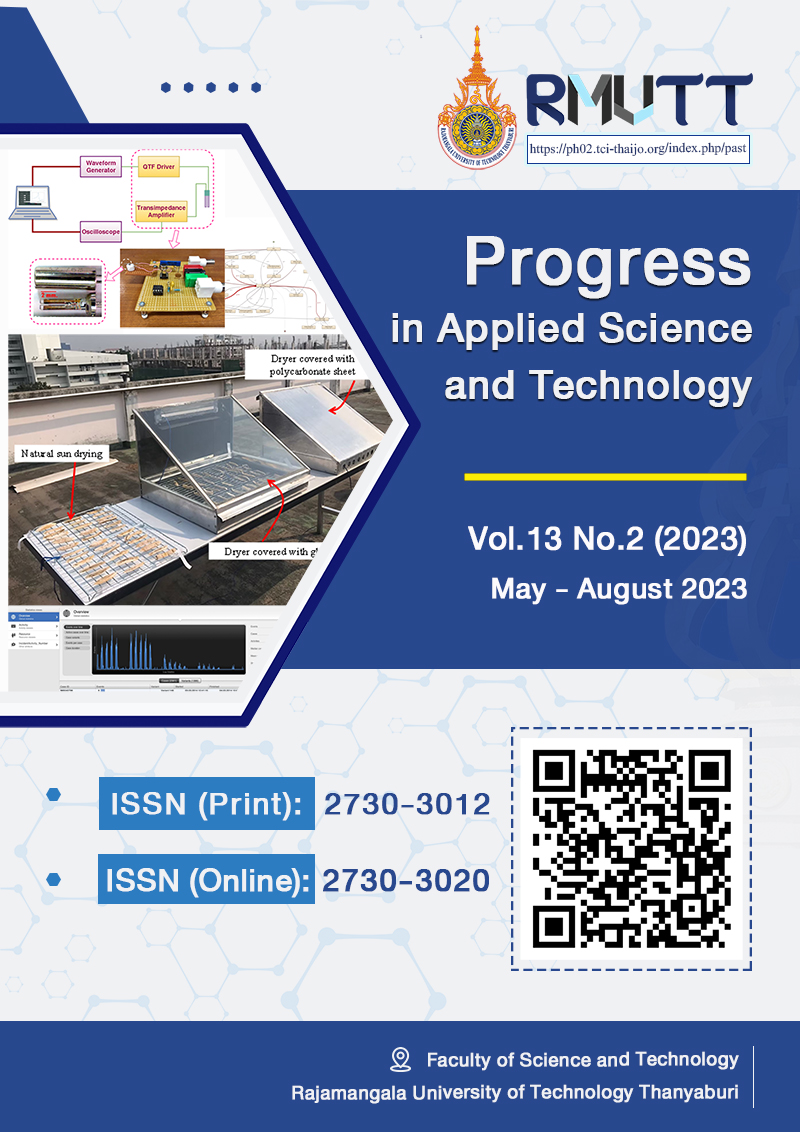Compact Python-based Control System for Q-factor Measurement of the Quartz Tuning Fork Probe in Scanning Probe Microscopy
Main Article Content
Abstract
The report presents a compact Python-based automatic control system for frequency-response and Q-factor measurement of the piezoelectric quartz tuning fork, widely utilized as the shear-force sensing probe in scanning probe microscopy (SPM). The frequency sweep of the driving signal and the signal readout of the QTF are controlled automatically by a Python-based software, developed in this research. The software provides a GUI front panel for users to choose the number of data points for the frequency sweep, the frequency range and the amplitude of the driving signal. Additionally, the frequency response curve and the Q-factor calculation can be displayed after the end of the frequency sweep. Such an automatic Q-factor measuring system will assist the design of efficient probes for SPM systems.
Article Details

This work is licensed under a Creative Commons Attribution-NonCommercial-NoDerivatives 4.0 International License.
References
Karrai K, Grober RD. Piezo-electric tuning fork tip-sample distance control for near field optical microscopes. Ultramicroscopy. 1995;61(1–4):197–205.
Karrai K, Grober RD. Piezoelectric tip-sample distance control for near field optical microscopes. Appl Phys Lett. 1995;66(14):1842–4.
Atia WA, Davis CC. A phase-locked shear-force microscope for distance regulation in near-field optical microscopy. Appl Phys Lett. 1997;70(4):405–7.
Edwards H, Taylor L, Duncan W, Melmed AJ. Fast, high-resolution atomic force microscopy using a quartz tuning fork as actuator and sensor. J Appl Phys. 1997;82(3):980–4.
Göttlich H, Stark RW, Pedarnig JD, Heckl WM. Noncontact scanning force microscopy based on a modified tuning fork sensor. Rev Sci Instrum. 2000;71(8):3104–7.
Mazzeo AD, Stein AJ, Trumper DL, Hocken RJ. Atomic force microscope for accurate dimensional metrology. Precis Eng. 2009;33(2):135–49.
Betzig E, Weiner JS, Finn PL. Combined shear force and near-field scanning optical microscopy. Appl Phys Lett. 1992;60(20):2484–6.
Toledo-Crow R, Yang PC, Chen Y, Vaez-Iravani M. Near-field differential scanning optical microscope with atomic force regulation. Appl Phys Lett. 1992;60(24):2957–9.
Novotny L, Hecht B. Principles of Nano-Optics. Cambridge University Press; 2012. p. 583.
Bhushan B. Scanning Probe Microscopy in Nanoscience and Nanotechnology 3. Springer Science & Business Media; 2012. p. 634.
Arkin WT. New Topics in Lasers and Electro-optics. Nova Publishers; 2006. p. 246.
Diaspro A. Nanoscopy and multidimensional optical fluorescence microscopy. Boca Raton, FL: Chapman & Hall/CRC; 2010.
González L, Otero J, Cabezas G, Puig-Vidal M. Electronic driver with amplitude and quality factor control to adjust the response of quartz tuning fork sensors in atomic force microscopy applications. Sens Actuators Phys. 2012;184:112–8.
Wang Q, Wang Z, Ren W, Patimisco P, Sampaolo A, Spagnolo V. Fiber-ring laser intracavity QEPAS gas sensor using a 7.2 kHz quartz tuning fork. Sens Actuators B Chem. 2018;268:512–8.
Zhang J, O’Shea S. Tuning forks as micromechanical mass sensitive sensors for bio- or liquid detection. Sens Actuators B Chem. 2003 Aug 15;94(1):65–72.
LabVIEW [Internet]. 2021 [cited 2021 Aug 6]. Available from: https://www.ni.com/en-th/shop/labview/select-edition.html
Bhushan B, Fuchs H. Applied Scanning Probe Methods XII: Characterization. Springer Science & Business Media; 2008. p. 271.






